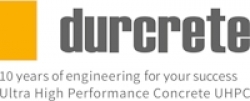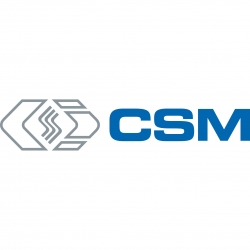Bühne für kostenlose Technologiepräsentationen
Hall 8 Thursday, June 6, Hall 8 - morning session
10:00 Uhr
Scenario-based safety evaluation and SOTIF readiness with advanced autonomous simulation
 Dr Minhyuk Son
Dr Minhyuk SonVice president
Morai
Korea
The safety and reliability of autonomous driving technology have become pivotal challenges within the modern automotive industry. Ensuring the stable operation of autonomous vehicles in unpredictable situations is essential for safety. Rigorous testing and validation across various scenarios is imperative. In this light, adherence to the SOTIF (Safety Of The Intended Functionality) standard, which aims to minimize risks and secure safety in autonomous driving technology, is increasingly crucial. This session will explore the advanced features of Morai's autonomous driving simulation platform and will provide insights into strategies for complying with SOTIF.
What the audience will learn
- The crucial role of simulation in bolstering the safety and efficiency of autonomous driving systems
- The importance of verifying the safety of autonomous driving systems, along with current trends in global safety standards
- About the SOTIF (Safety Of The Intended Functionality) standard and how it impacts autonomous driving technologies
- How thorough testing and validation can ensure consistent operation of autonomous vehicles in unforeseen situations
- Practical strategies for meeting and implementing the SOTIF standard during the development and testing phases of autonomous vehicles
10:20 Uhr
Efficiently testing OTX-based diagnostic tester using simulator tool
 Dr Alexander Karmazin
Dr Alexander KarmazinDirector automotive products
RA Consulting GmbH
Deutschland
The OTX standard (ISO 13209) is gaining ground in the automotive field. As test sequences in OTX are often developed generically for different control units or even model series, they must also be tested accordingly using regression tests. The use of a simulator for vehicle diagnostics can greatly increase the efficiency of development and quality assurance in this area. The presentation will discuss the usage and benefits of the diagnostic simulator for the development of OTX-based diagnostic sequences on concrete examples.
What the audience will learn
- Vehicle diagnostics
- OTX based diagnostic tester
- Diagnostic simulators
10:40 Uhr
Overcoming challenges for early system validation of automotive driving functions
 Dr Thomas Bauer
Dr Thomas BauerBusiness area manager
Fraunhofer IESE
Deutschland
Digital twins have emerged as an innovative and powerful approach in engineering processes across various industries. A major challenge is to provide the operational and execution infrastructure for digital twins on the system level, as they comprise different types of analysis and control components.
This presentation addresses the challenges and solutions for creating and operating digital twins for automotive driving functions in practice. The validation platform FERAL is introduced, which enables the construction of digital twins through virtual prototypes and virtual test scenarios by coupling simulation models and tools, existing code and virtual hardware platforms. Results from practical applications are shown.
What the audience will learn
- The benefits and challenges of introducing virtual validation for automotive driving functions
- Technical assets and tools that address the challenges and obstacles for virtual validation in automotive projects
- How digital twins are constructed by coupling simulation models and tools, existing code and virtual hardware platforms
- How traceability between engineering assets (e.g. requirements, models, validation scenarios and results) is achieved
- Examples and results from projects with automotive companies
11:00 Uhr
Test benches with a high rigidity and stiffness using UHPC
 Dr Bernhard Sagmeister
Dr Bernhard SagmeisterManaging director
durcrete GmbH
Deutschland
Due to the high natural frequencies of electric motors, it is necessary for the bases of test equipment to be very rigid so that resonance frequencies do not distort the recording of test results. Cast iron and welded steel constructions reach their limits here. The presentation describes the use of a solid, cement-bonded mineral casting (ultra-high-performance concrete or UHPC) with a modulus of elasticity of 80,000MPa for testing tables and benches.
What the audience will learn
- Use of UHPC for test benches
- Design of machine elements with UHPC
- Analyses of machine elements with UHPC
11:20 Uhr
Testing of high-power drivetrains at high speeds
 Dr Albert Wimmer
Dr Albert WimmerManaging director
Isar Getriebetechnik GmbH & Co. KG
Deutschland
In the context of e-mobility applications trending rapidly toward more and more powerful drive systems, two main issues can be identified regarding appropriate facilities to measure, test and record drive systems: the boundary conditions of installation space for testing of complete e-axles are getting more and more difficult because of the high integration of e-drives; and the integration of measurement technology (torque cells) has to be adopted to high speeds. At a certain point you can either use specific measurement devices or – much easier – use the right couplings. The presentation will show examples of integrated central shaft cooling.
What the audience will learn
- Testing of the most powerful e-drives and e-axles
- Modular test rigs and retrofitting of existing facilities
- Intelligent integration of measurement systems
- A newly developed high-speed joint shaft for test rig applications
Hall 10 Thursday, June 6, Hall 10 - morning session
10:00 Uhr
Generated reality helps autonomous driving close the loop of data
 Xiaohang Yin
Xiaohang YinCOO
ZD Automotive
Deutschland
The value of scenario data in autonomous driving development is vital. The source of traditional scenario data mainly relies on real vehicles recording data. Data costs remain high and scenario coverage is very limited. Now we can use digital twin technology to transform real road data into virtual scenario models and effectively generalize the behavior of traffic participants to achieve exponential growth in scenario data generation. The high-precision data acquisition, digital twin, simulation and back-injection toolchain launched by ZD Automotive could create high-coverage, high-quality data at low cost and facilitate autonomous driving to efficiently close the data loop.
What the audience will learn
- Traditional data limits – reliance on costly real vehicle recordings with limited scenario coverage
- Digital twin and generated reality innovation – transform road data into virtual models, exponentially increasing scenario data
- Efficient data solution – high coverage and quality data at low cost, closing the autonomous driving data loop
10:20 Uhr
Thermal testing of HV components with a keyhole method
 Timo Eich
Timo EichBusiness development manager
CSM Computer-Systeme-Messtechnik GmbH
Deutschland
The safety and performance of high-voltage components is significantly affected by temperature. In particular, HV batteries are susceptible to temperature effects. Therefore, temperatures have to be monitored extensively alongside high density inside HV components in the development process. The question now is, how can many temperature channels be realized without sacrificing the sealing of components and influencing their overall behavior? In this presentation Dipl.-Ing. Timo Eich discloses a revolutionary approach to precisely measure hundreds of temperatures inside HV components with pin-point accuracy utilizing a single digital, high-end temperature measurement system with a minimally invasive character.
What the audience will learn
- Why classical instrumentation with thermocouples or RTDs fails when lots of measurement points are demanded inside of HV components
- Why the verification of thermal propagation models demands high-precision positioning of sensors and how to archive precise positioning
- How over 500 sensors can be acquired with only one single cable led out of the device under test
- How an accuracy of temperature measurement down to .1 Kelvin can be reached
- How signal noise and interference are eliminated by the use of a digital measurement system
10:40 Uhr
Open ecosystems: the art of what's possible with dynamic data
 Stefan Kremer
Stefan KremerInternational sales director
Müller-BBM VibroAkustik Systeme GmbH
Deutschland
In today's engineering and testing landscape, the concept of open ecosystems has emerged as a pivotal force driving innovation and digitalization across industries. Within this paradigm, dynamic data acquisition stands as a cornerstone, enabling organizations to harness the power of real-time information for unprecedented insights and agility. Delving into the interplay between open ecosystems and IIoT/Edge/cloud computing, we are exploring the artistry of what's possible. From revolutionizing decision making processes to fostering collaborative innovation, join Müller-BBM on a journey through the transformative potential of these symbiotic elements in shaping the future of interdisciplinary engineering and testing.
What the audience will learn
- How data ecosystems may change testing processes
- The typical scope of applications
- How to become a part of an open data ecosystem
11:00 Uhr
Strategies for maintaining compliance amid changing regulations
 Antonio Bonetti
Antonio BonettiManager of sales and solutions
Aptiv
Italien
Regulators from the EU and around the world are constantly updating the legal requirements for automotive manufacturers, particularly regarding safety and the environment. The advent of electric vehicles (EVs), advanced driver assistance systems (ADAS) and autonomous vehicles are driving the development of new standards and pose new challenges for engineers. This presentation focuses on strategies for flexible performance indicators as regulations evolve. It highlights the value of edge analytics, event-based data acquisition, video and customizable dashboards for maintaining compliance. It includes a demonstration showing an example of how some manufacturers are using these tools and processes today.
What the audience will learn
- Evolving regulations mean that manufacturers need flexible vehicle data acquisition strategies
- Edge analytics provides rapid information about vehicle performance and regulatory compliance
- Event-based data acquisition prevents data overload and provides engineers with fast access to relevant information
- Video monitoring, aided by AI, speeds up troubleshooting and ensures test coverage
- Customizable dashboards make it easy to track compliance and test coverage, while also aiding in root cause analysis
11:20 Uhr
Data-driven validation for the safety of automated driving
 Dr Max Winkelmann
Dr Max WinkelmannData scientist
IAV GmbH
Deutschland
The automated vehicle (AV) industry faces a significant challenge: how can it effectively identify and assess the safety risks associated with AVs? A wide range of test setups, driving scenarios and simulation models offer valuable testing elements for validation, yet their effective application remains unclear. The presentation discusses how artificial intelligence and machine learning methods can link the crucial testing elements purposively. Consequently, the validation of automated vehicles becomes data-driven, and tests traceably contribute to safety validation and the AV release.
What the audience will learn
- With the 'multipillar approach', the UN recommends combining virtual and real tests to validate the safety of automated vehicles
- Through active learning, scalable virtual test setups provide broad scenario coverage that can be characterized by probabilistic models
- Based on knowledge gained virtually, transfer learning allows real tests to be parameterized in a targeted manner
- The findings from the real tests are in turn used to improve the models used in the virtual tests
- Used iteratively, the data-driven linkage of virtual and real tests uncovers critical scenarios, and test results become increasingly reliable
